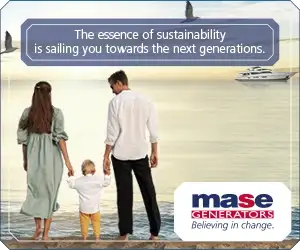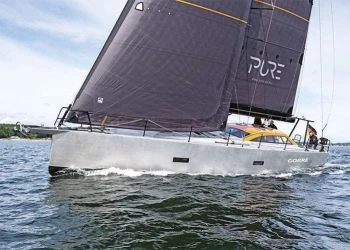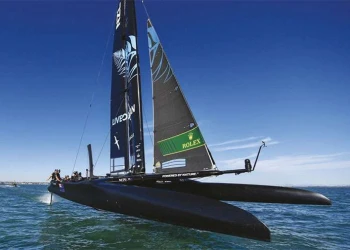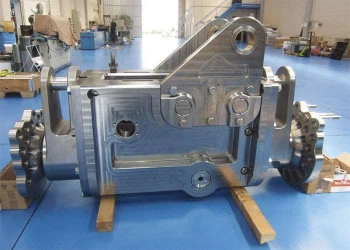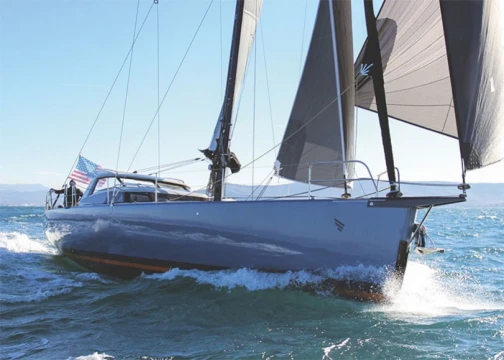
The purposeful new Pegasus 50, around the world in great comfort
The purposeful new Pegasus 50, around the world in great comfort
The purposeful new Pegasus 50 will take you around the world in great comfort... And if you so wish, with an unladen displacement of less than 12 tonnes it can also do so rather quickly!
From the outset four key parameters – comfort, safety, quality and speed – informed the design of this comfortable yet fast 50ft ocean cruiser from Pegasus Yachts, resulting in a lightweight hi-tech boat that’s markedly different from mainstream offerings. It’s a formula that has attracted owners with a racing background, including some with world championship titles to their name. All of them are seeking an enjoyable and fast, yet manageable and reliable cruising yacht that will look after them in tough conditions.
Many designers have attempted to blend indoor and outdoor spaces on a monohull but few have been as successful as the Pegasus 50’s arrangement. A wide glazed sliding door between the cockpit and saloon maintains a connection between these areas, even in inclement weather, while giving a watch-keeper in the comfort of the saloon a full 360- degree view of the outside world.
Equally, the large windscreen and hardtop over the cockpit provide excellent protection against all conditions, whether sun, spray or rain, extending the range of situations in which the boat can be handled without resorting to wearing foul weather gear. This is a huge boost to both comfort and safety, especially when sailing short-handed. Surprisingly it’s still rare for a manufacturer of performance cruising yachts to address this issue, even though the past few years having seen huge developments in this respect in Imoca 60s and Class 40s. In better weather the cockpit and saloon can be opened up to provide an almost seamless space, separated by just two easy steps, creating a wonderful large, very comfortable and very ergonomic living area.
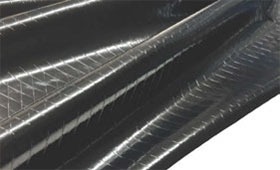
The “less is more” philosophy is responsible for much of the design’s appeal among extremely knowledgeable and experienced sailors. Pegasus Yachts’ co-founder, managing director and principal designer Marko Paš is forthright about the importance of this aspect: ‘I strongly believe that we don't have the resources in the boating sector to implement many of the new systems we are seeing fitted on many of today's boats in a way that is hassle free,’ he says. ‘Reducing complexity increases your freedom and minimises the dependency on others for maintenance and repairs.’ In a practical sense this means that, while voyaging, you are less likely to spend valuable time looking after unnecessarily complex systems, or be stuck for extended periods in a remote port waiting for spare parts, or qualified technicians, to be flown out.
Nevertheless, the Pegasus 50 has a carbon mast, high-quality sails and a watermaker as well as top-notch electronics and autopilots. These are all naturally essential elements of any contemporary yacht of this style, but beyond that there's a sensible limit to the amount of equipment on board. The key priority is to make all the systems as bulletproof as possible, with a high degree of redundancy where appropriate.
Standard equipment, for example, includes a spare macerator and seawater pump for the toilets, as well as a spare electric pump for the fresh water system. These may sound like small points, but they can make a critical difference when faced with a breakdown.
This philosophy also extends to the extras list. It’s not uncommon for options on a cruising yacht of this size to amount to a lot more than 50 per cent of the base price. However, Pegasus has taken the opposite approach as part of a policy to provide a complete turn-key package delivered to the owner as a fully equipped, completely assembled and tested boat. At handover the vessel is fully in commission with sails bent on, the rod rigging correctly tensioned and so on. There's even a trial sail with the sailmaker to ensure everything is in order.
As a result, although there were some differences between the early boats in terms of equipment and specification, most of the later boats are very similar, with a high level of standard equipment right down to towels, cutlery and bedding. ‘We learnt a lot in that respect from our early clients,’ says Paš. The key items that remain on the extras list therefore are less common pieces of kit which, at least historically, few owners have chosen, such as stern thrusters and Starlink terminals.
From the outset the intention was to create a lightweight boat that would be easy to handle and easy to sail well. The sail area to displacement ratio is fairly conservative, so the mast is relatively short. This reduces weight aloft, which in turn increases stability while also helping to reduce overall displacement. And smaller sails are, of course, easier to handle.
The lightest feasible displacement – the Pegasus 50 weighs only 11,700kg unladen – was also an important plank in the design concept, as a lighter boat requires a smaller sail area than a heavy one and is therefore intrinsically easier to handle. Structural engineering is by Giovanni Belgrano’s Pure Engineering in New Zealand, with involvement from Gurit. ‘The boat is engineered to be very lightweight, with strategic use of carbon,’ says Paš. ‘And we take good care over the production processes, including the infusion of mouldings, so the structure is very solid.’ Effective quality control is easy to overlook, but is a vital aspect of boatbuilding that Pegasus takes very seriously. Thermal imaging cameras, for instance, are used to monitor the effectiveness of the resin infusion process.
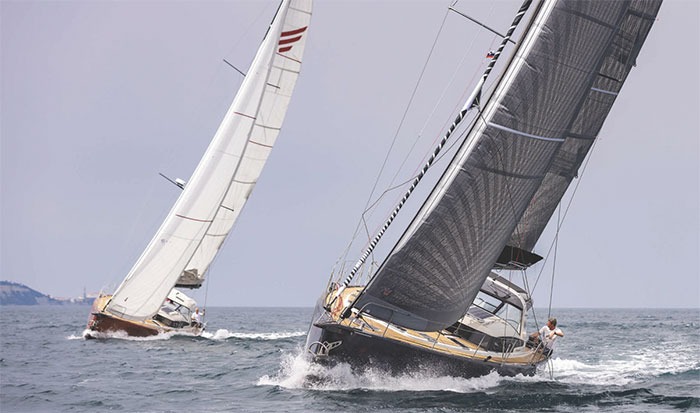
Modern hull lines and sail plan mean this is an easily driven boat and it’s easy to change gear for different conditions. As a result, the boat’s performance potential is such that experienced racers are guaranteed to get a thrill while comfortably cruising the oceans, without the need for a highly skilled team on board. ‘Most clients are experienced serial boat owners who know what they want and tell us they don't see an alternative in the market.’ says Paš. ‘Other than for very short periods they will almost always be sailing as a couple or as two friends. Our owners also have the experience to understand that we are offering something different and they like the boat’s speed.
‘But over the past 20 years raceboats have moved well away from the cruising world. Our clients typically want to do a Mediterranean / Caribbean programme, maybe continuing on to Polynesia. A couple of boats have also been up to the Norwegian fjords, but we always expect those who venture north to eventually return to one of the warmer parts of the world.’
Paš has now personally sailed more than 10,000 nautical miles on a Pegasus 50, yet so far has not needed to reef the mainsail. That might sound incredible to many, but anyone who has sailed extensively on a Class 40 will not be surprised. Despite being an extremely lightweight boat the 40 will also carry a full mainsail up to 30 knots of true wind, with a staysail (J2) and careful tweaking of mainsail trim, albeit with the help of 500kg of water ballast. Furling the J1 and switching to the staysail, which effectively doubles as a J2, in 17 to 18 knots of true wind is a perfect solution to maintain efficient sail shapes in stronger breezes with minimal effort.
Attention to detail is another theme that runs right through every aspect of the Pegasus 50. This can be seen in everything from the exemplary manner in which the saloon and cockpit are connected together, to the twin technical rooms under the cockpit in which key systems are organised for quick and efficient maintenance. One side for is reserved for pumps and liquids, while the other houses the electrical systems. Both are accessed from big cockpit hatches and are only one step down from the cockpit level, with all service items positioned so that they can be accessed at eye level when sitting down. Equally, deck hatches are carefully arranged to maximise natural ventilation, both at anchor and under sail, including a pair of opening ports in the front of the coachroof. There’s also an extraction hood above the cooker with a transom exhaust and all cabins have top-notch variable speed Caframo Sirocco ll fans with timers. A similar level of detail has been applied to ensure grabrails are optimally positioned inside and out, while a deep toerail, plus substantial lifelines and stanchions, help maximise safety when working on deck.
Pegasus may be a small brand but it’s born of a huge amount of experience and is not afraid to plough its own furrow. ‘As a new small brand, we have to position ourselves in a different niche to the big yards,’ says Paš. The Pegasus formula – fast, comfortable, easy to sail short-handed, and easy to maintain – is enormously compelling.
A second Pegasus design is also under way. This will be another short-handed performance cruiser, but slightly larger at around 20 metres overall length. Conceptually it will follow a similar ethos as the Pegasus 50 and will be built using the same technologies, but will have a little more performance than the 50.


